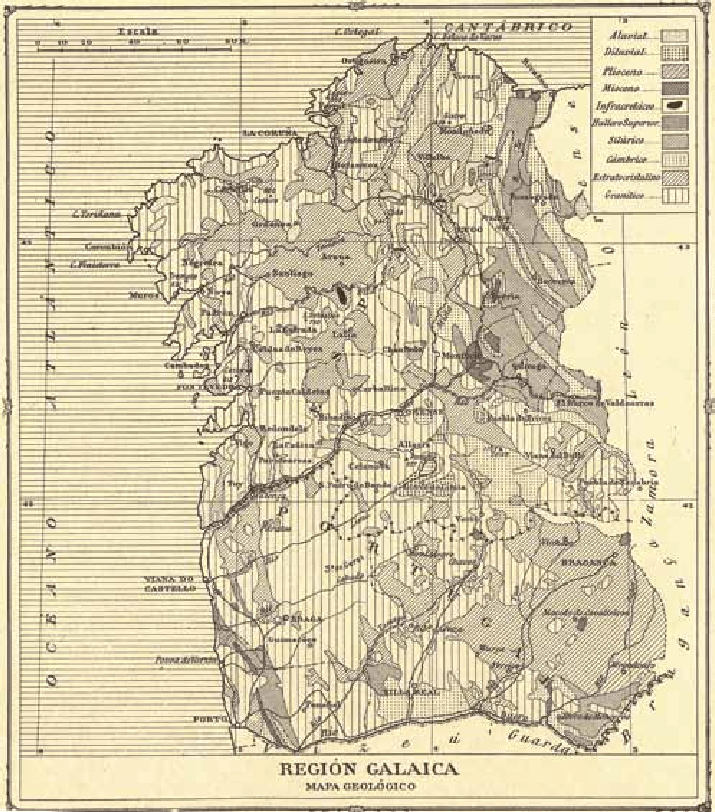“Commemoration of the 8th anniversary of the proposal to create the Galician (and now Celtic) Region with the publication of a historical map”
News published in the Mar do Norte newspaper on 17 July 1929
Today saw the inauguration of the official map of the Galician Region, by Dantín Cereceda, who is said to have presided over the almost-created administrative buildings of the government. The aim was to remember all the work that went into making a new State a reality.
As is well known, since Leonardo José Coimbra’s visit to A Coruña, on 7 September 1921, a pact of brotherhood between Galicia and the Monarchy of the North (Portugal) was publicly sealed, which had already been promoted by civil society and various Galician and Portuguese institutions in the North. The intention was to create the Galician Region, as a new country supported by the Kingdom of Northern Portugal, and after a previous intense relationship with the group of intellectuals who led its constitution, the Grupo Nós, especially with Vicente Risco, in Galicia.
Also noteworthy is the impetus given by the Brotherhoods of Language (founded in 1916), a network of political and cultural groups whose fundamental element is the propaganda and intensive use of the Galician language, which begins to be used regularly in narrative prose (short stories and novels), non-fictional prose (articles, essays, didactic and informative texts), public speaking and formal discourse. As far as authors are concerned, we highlight figures such as V. Risco (1884-1963), R. Otero Pedrayo (1888-1976) and, above all, A. Rodríguez Castelao (1886-1950). Among the group of cultural dissemination agents were newspapers such as A Nosa Terra (1917-36), magazines such as Nós (1920-23, 1925-35), the Seminario de Estudos Galegos (1923-36) and the Partido Galeguista, founded in 1931.*
Despite the cataclysm of 23 April 1922, which caused Galicia to disappear as it existed, the resulting islands claim their autonomy, but have a special synergy with Portugal, a country with deep roots in an immeasurable natural and vital space. An idea also supported by intellectuals such as Fernando Pessoa, Emilia Pardo Bazán or Castelao, whose drawing Edge of Minho, published in 1920, has served as a logo and a call for mobilisation and demands. The coincidence with one of the milestones in Ireland’s independence process, the Easter Uprising, in 1916 (an armed rebellion against British authority that led to the country’s independence in 1922), lead many intellectuals, who nowadays live on the islands, to argue that the special agreements with Portugal should also be extended to the Republic of Ireland. It should be remembered that, according to Lebor Gabála Érenn, in The Book of the Conquests of Ireland – a written compilation of oral legends made by Irish monks in the 11th century –, the invasion of the ‘Sons of a Thousand’ from ‘Brigantia’ (Brigantium) (A Coruña) in Galicia, founded by Breogán, was the last of the Celtic invasions that would rule Ireland, maintaining their power until the arrival of the Normans in the 12th century, of shared history and culture, and of Celtic culture (it was from Galicia that the Celtic lineage arrived on the island). A ‘Celtic Region’ could therefore be formed, made up of Galicia, Portugal and Ireland.
*Editor’s Note: In the interest of current readers of the Encyclopaedia, it was decided to include the dates of death of the historical figures mentioned, as well as the founding and formal end of the newspapers.
 Región galaica. Fuente: J. Dantín Cereceda, "Península Ibéri-ca", en E. Granger, J. Dantín & J. Izquierdo (eds.), Nueva Geografía Universal, Madrid 1929, Tomo III, 372. (https://www.researchgate.net/figure/Figura-3-Region-galaica-Fuente-J-Dantin-Cereceda-Peninsula-Iberi-ca-en-E_fig7_333455452)
Región galaica. Fuente: J. Dantín Cereceda, "Península Ibéri-ca", en E. Granger, J. Dantín & J. Izquierdo (eds.), Nueva Geografía Universal, Madrid 1929, Tomo III, 372. (https://www.researchgate.net/figure/Figura-3-Region-galaica-Fuente-J-Dantin-Cereceda-Peninsula-Iberi-ca-en-E_fig7_333455452)
Consello da Cultura Galega (online). Leonardo Coimbra. http://epistolarios.consellodacultura.gal/album-de-galicia/detalle.php?persoa=26770
Consello da Cultura Galega (online). 1916-1950. “Xeración Nós”: El rayo transparente. https://consellodacultura.gal/especiais/loia/historia.php?id=86&idioma=3
Dantín Cereceda, J. (1929). Península Ibérica, en Granger, E., Dantín, J. & Izquierdo, J. (eds.). Nueva Geografía Universal, Madrid. Tomo III, 372, citado en: Trillo Santamaría, J. M., & Garcia, J. (2015). Galicia-Minho: el cuestionamiento de una frontera. Debates en el discurso geográfico ibérico. Revista de Historiografía, 23.159-189. https://repositorio-aberto.up.pt/handle/10216/81697
Real Academia Galega (2014). Castelao Ilustrador. https://academia.gal/-/castelao-ilustrador
Comments